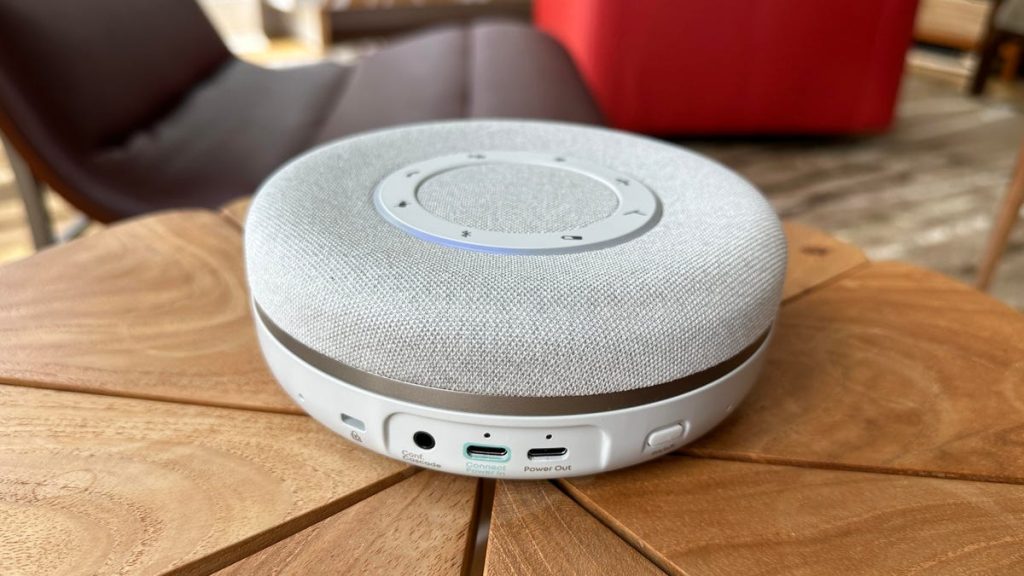Budget Considerations for Speakerphone Purchases
Establishing a budget is the crucial first step in selecting a speakerphone. The pricing spectrum for speakerphones is broad, catering to various needs and financial constraints. High-end models, brimming with advanced features and superior audio quality, often command prices of $200 or more. However, a plethora of excellent options exist in the mid-range bracket of $80 to $150, offering a compelling balance of performance and affordability. For budget-conscious consumers, entry-level models priced below $50 can still deliver a noticeable improvement over a phone’s built-in speaker, making them a viable option for basic communication needs. Carefully consider your budget and prioritize the features essential for your usage scenario.
Connectivity and Usage Scenarios for Speakerphones
Determining the intended use of the speakerphone is paramount for choosing the right features. Nearly all speakerphones offer wired connectivity to computers via a standard cable, ensuring compatibility with a wide range of devices. However, the convenience of wireless Bluetooth connectivity has become increasingly popular, allowing for seamless integration with smartphones, tablets, and laptops. Some models even incorporate a dedicated USB Bluetooth dongle, simplifying the pairing process and establishing a more stable connection with computers. This is particularly beneficial in environments prone to wireless interference. Analyze how you plan to use the speakerphone – primarily with a computer, mobile devices, or a combination of both – and select a model with the appropriate connectivity options.
Participant Capacity and Room Size Considerations
The number of people participating in conversations is a key factor when choosing a speakerphone. Most models on the market can handle multiple speakers effectively, ensuring clear communication in group calls. However, for larger conference rooms or situations involving a significant number of participants, it’s crucial to opt for a speakerphone specifically designed for such environments. These models often feature more powerful speakers and advanced microphone technology to capture audio from a wider area. If the speakerphone is primarily for personal use, such as video conferencing or individual phone calls, a smaller, less powerful model will suffice. Match the speakerphone’s capabilities to the typical size of your meetings and the environment in which it will be used.
Portability and Mobile Usage of Speakerphones
Portability is a critical consideration for individuals who frequently travel or use their speakerphone in various locations. Smaller, more compact models are ideally suited for on-the-go use, easily slipping into a bag or briefcase. However, portability often comes at the expense of speaker volume and overall audio performance. Larger speakerphones, while offering superior sound quality and greater participant capacity, may be less practical for frequent travel. Evaluate your mobility needs and strike a balance between portability and performance. If portability is paramount, prioritize compact models that still offer decent sound quality.
Importance of Return Policies and Trial Periods
Before purchasing a speakerphone, familiarize yourself with the retailer’s return policy. A generous return policy provides peace of mind, allowing you to test the speakerphone in real-world scenarios and return it if it doesn’t meet your expectations. Some retailers even offer extended trial periods, giving you ample time to evaluate the device’s performance and suitability for your needs. If you’re undecided between two models, consider purchasing both and conducting a side-by-side comparison. This hands-on approach can reveal subtle differences in sound quality, features, and ease of use, allowing you to make a more informed decision. Don’t hesitate to leverage return policies to ensure complete satisfaction with your purchase.
Detailed Budget Breakdown and Feature Prioritization
Understanding the price-to-performance ratio within each budget tier is essential for making a wise investment. Entry-level models under $50 provide basic functionality and a noticeable improvement over a phone’s speaker, making them suitable for casual calls or personal use. The mid-range segment, from $80 to $150, offers a sweet spot for most users, balancing affordability with enhanced features like Bluetooth connectivity and improved audio quality. Premium models exceeding $200 cater to demanding users and larger conference rooms, boasting superior sound quality, advanced microphone technology, and expanded connectivity options. Prioritize the features that align with your needs and budget constraints. For example, if portability is paramount, focus on compact models with decent sound quality, even if they lack some of the advanced features found in higher-priced options. Conversely, if sound quality is the utmost priority, invest in a premium model with superior audio performance, even if it means sacrificing portability. By carefully considering your budget and prioritizing essential features, you can select a speakerphone that delivers optimal value and performance for your specific requirements.

